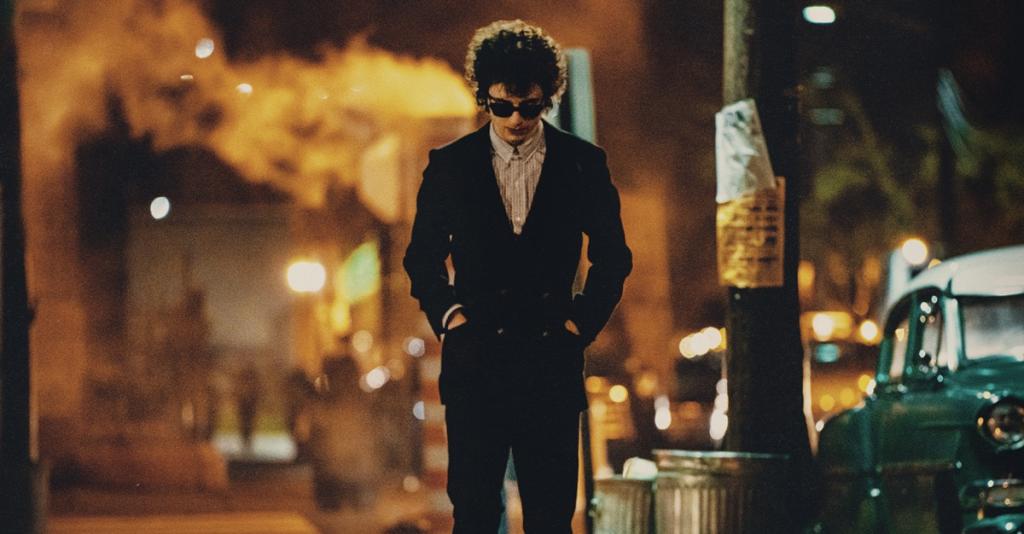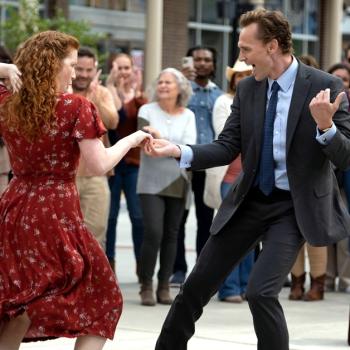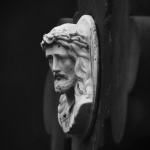Nobody puts Bobby in a box. That’s the message of A Complete Unknown, the Bob Dylan biopic that landed in theaters on Christmas Day.
Covering four years in Dylan’s early 20s, it portrays an occasionally arrogant young man who doesn’t want to be defined by anything outside himself, whether it’s his birth name, his past, his relationships, or the kind of music he wants to play.
But, if your life is dedicated to pursuing your personal vision, and you’re unwilling to compromise, it’s inevitable that you’re going to disappoint and displease people.
This is especially true if you’re extravagantly talented — and know it — and also very young.
What’s A Complete Unknown About?
In 1961, 20-year-old Bobby Zimmerman (Timothée Chalamet), now going by Bob Dylan, arrives, guitar in hand, in Greenwich Village in New York City from his native Minnesota. He sets out on a quest to meet his idol, folk legend Woody Guthrie — writer of ‘This Land Is Your Land” — hospitalized with Huntington’s disease in New Jersey.
He manages to meet and sing for Guthrie (Scoot McNairy), and Guthrie’s longtime friend, folk singer Pete Seeger (Edward Norton).
Dylan makes a strong impression on both men, and Seeger facilitates his introduction into the Greenwich Village folk-music scene.
Based on the 2015 biography Dylan Goes Electric! Newport, Seeger, Dylan, and the Night That Split the Sixties, by Elijah Wald, and directed by James Mangold (credited as co-writer, with Jay Cocks), the film follows the quick upward trajectory of Dylan’s musical career.
Along the way, he meets and starts a romance with activist Sylvie Russo (Elle Fanning), a fictionalized version (at Dylan’s request) of real girlfriend Suze Rotolo. But during Russo’s absence, he has a fling, which turns into an on-and-off relationship, with already-famous folk singer Joan Baez (Monica Barbaro).
He also becomes pen pals, and IRL pals, with country legend Johnny Cash (Boyd Holbrook), who encourages Dylan’s inherent contrarian tendencies.
The film climaxes with Dylan’s decision to abandon acoustic folk music for electrified rock ‘n roll at, of all places, the 1965 Newport Folk Festival in Rhode Island.
If you’re wondering about the impact of that night, refer to the title of the biography, above.
And, the title of the movie comes from the lyrics of Like a Rolling Stone, which Dylan performed that night.
Is A Complete Unknown Historically Accurate?
According to self-proclaimed “Dylan nerd” James T. Keane in the Jesuit magazine America:
While the film hews close to history most of the time, there are some notable departures: Late in the film, an angry fan screams out “Judas” at Dylan as he goes electric at Newport, causing the singer to turn to his band and mutter “play it loud.” That all actually happened—except it happened almost a year later and in England. (Known as the “Royal Albert Hall Concert,” the famous concert recording is actually from a May 17, 1966 concert at Manchester’s Free Trade Hall.) The film also includes Johnny Cash in the lineup at Newport 1965; he was there with Dylan in 1964 but not the following year.
Further, in order to make Seeger more central to the plot, the film invents several fanciful scenes where the two are together with a dying Woody Guthrie, Dylan’s first idol and the éminence grise of folk music. Mangold is playing fast and loose with the facts here. Only Dylan nerds will care, of course, but there are a lot of us.
I’m no Dylan nerd, and all this is before my time, but I do know that Dylan pulling out an electric guitar in front of a bunch of socially conscious, incredibly earnest folk fans did not go over well with many people.
Dylan also flirted with the protest movements of the ’60s, but, true to his go-my-own-way nature, that never defined him or his music.
Also, at the end of the film there’s a scene of Dylan, shades on, riding his motorcycle. If the angle of the shot reminds you at all of a similar scene in Lawrence of Arabia of T.E. Lawrence (Peter O’Toole) motoring along just before having a fatal accident, that’s probably no accident.
Not during this particular ride, but the following year, Dylan had a motorcycle accident that kept him from touring for a long time.
Is A Complete Unknown Worth Seeing?
Absolutely. All the actors do their own singing, and the dramatic and musical performances are outstanding. Mangold captures the zeitgeist of both New York and California during these four years, without any haze of nostalgia or any discernible agenda.
Not that I’m qualified to declare this from personal experience, but the film’s evocation of the period feels authentic and un-self-conscious. The film looks great, and if you don’t go in a Dylan fan, I’d be shocked if you don’t leave as one.
A Complete Unknown carries an R rating. There’s a lot of smoking, drinking, profanity and partial nudity, but sex is just implied, not shown. There’s also no attempt to draw conclusions about Dylan’s thoughts or motivations, other than making it clear he wanted to follow his own path.
He’s always been a bit of an enigma, and fittingly he remains that way.
The Faith of Bob Dylan
Religious themes aren’t addressed in the film, neither Dylan’s Judaism nor Baez’s Quakerism … but the film doesn’t attempt to be a comprehensive portrait of either artist.
That doesn’t mean that faith hasn’t figured prominently in Dylan’s career. Even Bishop Robert Barron is a huge fan.
The early songs featured are great, but my actual favorite Dylan record came out in 1979. Slow Train Coming was Dylan’s first release after his conversion to Christianity, followed by two more records in the same vein.
By all accounts, he’s remained Christian, but like with most things Dylan, he doesn’t go into a lot of detail about it in public.
Here’s a taste:
Asked by the Wall Street Journal in 2022 about what music he considers his “first love,” Dylan said:
Sacred music, church music, ensemble singing.
He also said:
I’m a religious person. I read the scriptures a lot, meditate and pray, light candles in church. I believe in damnation and salvation, as well as predestination. The Five Books of Moses, Pauline Epistles, Invocation of the Saints, all of it.
And, true to his ability to, at the age of 83, still surprise people, Dylan contributed a cover of the 1934 Cole Porter song “Don’t Fence Me In” to the soundtrack of the biopic Reagan, which came out in August.
Last but not least, here’s a look at A Complete Unknown:
Image: Timothée Chalamet in A COMPLETE UNKNOWN. Photo by Macall Polay, Courtesy of Searchlight Pictures. © 2024 Searchlight Pictures All Rights Reserved.
Don’t miss a thing: Subscribe to all that I write at Authory.com/KateOHare














